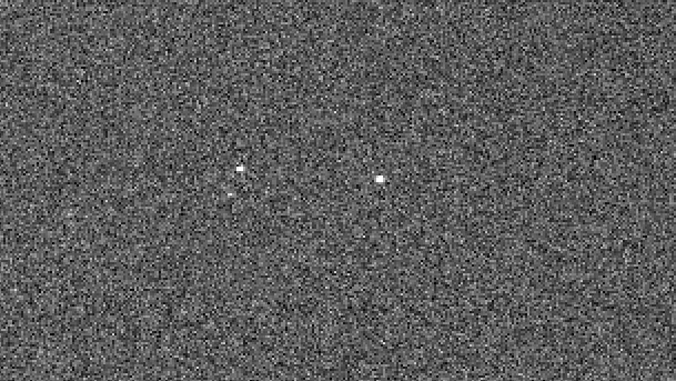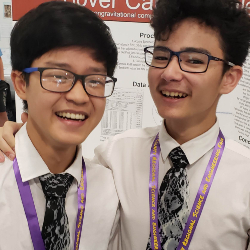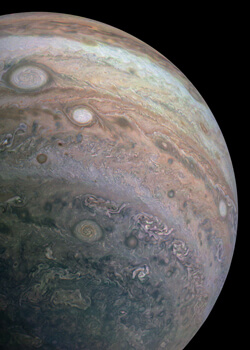
Two budding astronomers from Maui High School continue to hone their skills at solving the mysteries of the universe, thanks to the help of a University of Hawaiʻi Institute for Astronomy (IfA) HI–STAR (Hawaiʻi Student/Teacher Astronomy Research) mentor. Freshmen Wilson Chau and Holden Suzuki observed NASA’s recently-launched Lucy satellite on its journey to visit several Trojan asteroids. Guided by J.D. Armstrong, the Valley Isle teens used the Faulkes Telescope North (FTN, part of the Las Cumbres Observatory global network of telescopes) on Haleakalā to make the observations.
“On the day of launch, I was viewing the NASA livestream,” Chau said. “It’s incredible seeing the trajectory pass the livestream’s viewing point.”

NASA launched its Lucy satellite on October 16. The ambitious Lucy mission’s primary targets are eight Trojan asteroids—primitive asteroids that share Jupiter’s orbit and could shed light on the formation of the Solar System. Before arriving at its destination, the spacecraft will make three passes near Earth for gravitational boosts, and visit the main-belt asteroid, 52246 Donaldjohanson.
Chau and Suzuki are not new to studying spacecraft. In 2018, they used LCO telescopes to image the SpaceX Tesla. For the pair’s science fair project, the two measured the color of the Tesla, which surprisingly turned out to be white. They realized that this is because the attached white booster is much larger than the red car. The project earned them top honors at the Maui County Regional Science and Engineering Fair, and high honors at the Hawaiʻi State Science and Engineering Fair.
In 2020, the teens teamed up again for the science fair to study unusual asteroid 2019 LD2, which had been discovered by IfA’s Asteroid Terrestrial-impact Last Alert System (ATLAS) project. Originally thought to be a new type of object—a “Trojan Comet,” 2019 LD2 turned out to be a comet that had wandered in among the trojan asteroids. Armstrong and HI–STAR student, Sidney Moss, performed valuable follow-up observations that aided in confirming that the object was a comet, and not a true member of the Trojan family.
- Related UH News story: Maui 8th graders’ satellite discovery nets national attention, September 1, 2020

In between science fair work, the two also teamed up with Maui high schoolers Jed Teagarden and David Florez. Under Armstrong’s guidance, the students observed the defunct Orbiting Geophysical Observatory 1 satellite (OGO-1) prior to its explosive re-entry into Earth’s atmosphere. Chau and Suzuki’s re-entry observations garnered national media attention and were also featured on television series, Xploration Awesome Planet, which highlighted their contribution to science and the safety of the Earth.
“Doing this work with Lucy is a great way to merge all of our previous work, from LD2 and Trojan asteroids, to OGO-1 and satellites,” Suzuki explained. The pair plan to use the data they have obtained as the foundation for their entry in the 2022 Hawaiʻi State Science and Engineering Fair.
This outreach is an example of UH Mānoa’s goal of Enhancing Student Success (PDF) and Excellence in Research: Advancing the Research and Creative Work Enterprise (PDF), two of four goals identified in the 2015–25 Strategic Plan (PDF), updated in December 2020.

